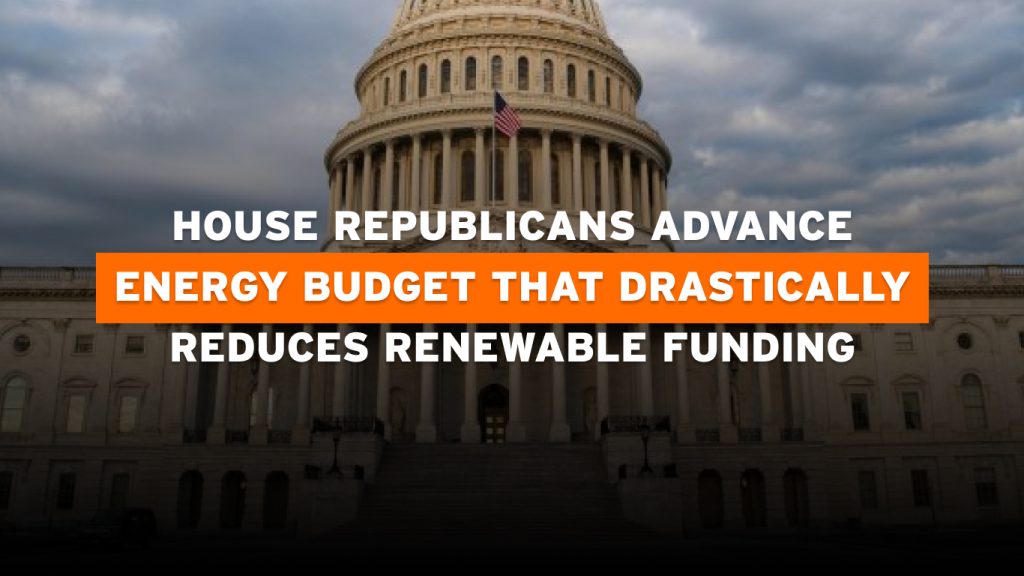House Republicans have moved forward with a fiscal 2026 energy and water budget that significantly slashes funding for clean energy efforts, according to Solar Power World. The proposal targets a steep $1.4 billion reduction in the Department of Energy’s (DOE) budget, with particularly deep cuts to the Office of Energy Efficiency and Renewable Energy (EERE) programs.
Major Cuts to DOE & Renewable Initiatives
Under the newly released budget, the DOE’s clean energy arm would see its funding nearly halved, stripping away more than $5 billion allocated previously through bipartisan infrastructure efforts. This includes the elimination of the Office of Clean Energy Demonstrations, a core funding source for emerging renewable projects. Solar Power World warns that such cuts could severely hamper clean energy advancement nationwide (House Committee on Appropriations).
Congressional Democrats have sharply criticized these moves, highlighting that reducing investment in clean energy and efficiency undermines both energy independence and the reliability of America’s energy infrastructure. The budget also proposes deep reductions for environmental management and nuclear nonproliferation programs, further drawing bipartisan concern .
Postgre-Mid-2027 Tax Incentive Phase-Out
The budget accompanies what has been dubbed the “One Big Beautiful Bill,” a broader budget package that phases out key clean energy tax incentives. By 2027, tax credits for solar, wind, electric vehicle purchases, and EV charging stations would be eliminated or significantly curtailed. Renewable projects built after these abrupt deadlines may face reduced or lost eligibility for critical incentives.
Analysis from Solar Power World notes that removing these financial supports could result in hundreds of millions of dollars in additional costs for households and businesses. Studies from Energy Innovation suggest energy prices may rise by 8% as utility costs climb (The Washington Post).
Widespread Industry Backlash
Clean energy advocates and industry officials across the political spectrum have expressed alarm. Solar Power World points out that the combined effect of budget cuts and an accelerated tax incentive phase-out will threaten solar deployment, consumer adoption, and long-term project financing (The Verge).
Sen. John Hickenlooper (D-CO) described the changes as five steps backward, not forward. He emphasized that these budgets could lead to “higher energy bills for families and businesses,” and hamper the nation’s competitiveness (Rocky Mountain PBS).
Elon Musk called the legislation “a massive strategic error,” warning about its impact on U.S. solar and battery infrastructure. This view is supported by other conservatives too, who fear the rollback could weaken America’s position in emerging markets like AI and electric vehicles .
Broader Implications for Grid and Climate
According to Energy Innovation, the proposed rollback could result in a 340-GW drop in clean generation capacity by 2030, equivalent to the electricity needed to power over 90 million households. This could lead to a 160 million metric ton increase in CO₂ emissions, comparable to adding 72 million cars to the roads .
Local businesses and installers in key states are already sounding the alarm. One Colorado solar installer warned that unless credit timelines are extended, business closures and job losses are likely .
What Happens Next?
The budget is now moving through the House Appropriations Committee before reaching the full chamber. The Senate is not expected to remove all clean energy provisions, with recent amendments dropping punitive tariffs and adjusting timelines .
If enacted, this proposal will redefine U.S. energy policy for years. It heavily favors fossil fuel projects—including expanded oil, gas, coal, and nuclear development—while systematically disincentivizing solar, wind, and energy efficiency via budgetary reductions and incentive expirations .
Strategic Response From Stakeholders
- Clean energy companies and trade associations should engage with legislators to articulate the economic and resilience benefits of solar and renewables.
- State governments may need to expand their own incentive programs to offset federal cuts.
- Energy consumers and local communities should monitor budget developments and advocate for sustainable clean energy solutions within their regions.
Outlook for U.S. Clean Energy
This represents a watershed moment in U.S. energy policy. Solar Power World emphasized that rapidly eliminating federal renewable energy support contradicts market signals and long-term climate goals. The ultimate impact on electricity prices, grid stability, and national competitiveness in clean energy will depend on final Senate and presidential decisions .
Bottom Line: The House Republican budget signals a major shif, prioritizing fossil fuels and mainstream energy programs while dramatically reducing support for renewables. This move sets a new tone for the country’s energy future, but faces significant resistance in the Senate and in public discourse. Stakeholders across the sector are bracing for a high-stakes battle ahead.

